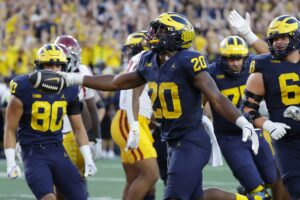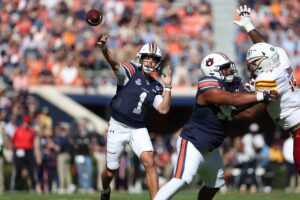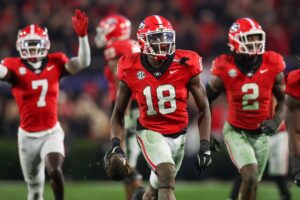It’s that odd time in the college football calendar. The weekly grind of the regular season is over and the excitement of Championship Week has passed. Some fans have hung up their gear for a long off-season while others have visions of bowl wins and championships dancing in their heads. But there’s one final contest of 2017 nestled neatly in its place, and that’s the annual Army-Navy Game. So while shopping and catching up with family obligations have crept back into the fan’s weekend, it’s time to get back to football for one last regular season game, Army-Navy 2017.
Army-Navy 2017: Back To Football
As any casual college football fan knows, the Army-Navy Game is about far more than football. It’s one of the great rivalries in all of sport. It’s a rivalry that is all consuming to the respective institutions. But it’s also a game that showcases the essence of the very sport many fans love.
The Rivalry
There are a lot of rivalries out there. Many of them have the same intensity of Army-Navy. But those with the intensity often aren’t accompanied with mutual respect or appreciation for the other side. Every single person at each institution is involved in this rivalry; not just those interested in sports. From the newest cadet or midshipmen to the oldest graduate, “Beat Navy!” or “Beat Army!” is a greeting that uniquely connections generations of those associated with each academy.
And there are plenty of respectful rivalries, but those often don’t elicit the passion that’s present in this contest. Only those on the opposite side of this rivalry know what it’s truly like to be a part of the Corps of Cadets or the Brigade of Midshipmen. To have the all-consuming competitive spirit coupled with the camaraderie only found in the fighting forces is what compels this rivalry into a category all of its own.
We’ve addressed the great aspects of this rivalry before. The way the game connects us to past of the sport and the pageantry involved in the contest are all reasons why this is a must for any true fan of college football. It’s a game with two national fan bases. It’s not a regional, or in-state rivalry. And, it’s a rivalry where no one really dislikes either team (except for, of course, the opponents). It really is the most unique of all rivalries in sports.
The juxtaposition of this purest of games against the excesses of Championship Week should not go unnoticed. Nor should the contrast between these athletes and those sitting in New York shortly after this game concludes.
The Game
The two teams are as close as they have been in over a decade heading into the game. While Army coach Jeff Monken has closed the talent gap with Navy, the Midshipmen are still the more talented team. And Army’s eight wins came against far inferior competition. Other than Army’s game against Ohio State, their toughest opponent was Duke. Navy, on the other hand has played a quality American Athletic Conference (AAC) schedule to include UCF, Notre Dame, Houston, and Memphis.
In last year’s matchup, Navy came in after a tough loss in the AAC Championship Game and was riddled with injuries. This year, Navy is much healthier and comes in rested. Zach Abey, who quarterbacked last season, is a year more experienced. Army’s vaunted rushing attack is averaging 368 yards per game. Navy’s ground attack isn’t too far behind, averaging just over 347 yards per game.
Keys To The Game
Abey and Army senior quarterback Ahmad Bradshaw figure to play a critical role in determining the outcome. Bradshaw leads the Black Knights with 1,472 yards and 11 touchdowns on the season. More importantly, he’s been an absolute technician running the triple option offense.
But the biggest difference will be the defense. While Navy has played much better competition, Army’s defense has been much more efficient. They’ve allowed 21 points per game, albeit on 360 yards allowed per game. The Mids have yielded almost 30 points per game, on 399 yards allowed per game. This efficiency on defense is critical when playing a typical “bend but don’t break”defense against an option team.
Football is far more simple than most people think. And this game is even simpler. The winner of this game is the team that executes their attack the best. The team with fewer turnovers and penalties will likely win the game.
The Future
Army comes in at 8-3, the most wins coming into Army-Navy since 1996. The Black Knights also have a chance to win ten games in a season for the first time since 1996 as well. They accepted a bid to the Armed Forces Bowl seven weeks ago. Monken’s back-to-back eight win seasons are a first for Army football since Jim Young‘s 1984 and 1985 teams.
And just with the juxtaposition of the game, the contrasts between the Army and Navy programs is interesting as well. Navy has found success over the last decade in conference play, most recently in the AAC. Meanwhile, Army has toiled as an independent since they left Conference USA several years ago.
The Academy has changed some of the ways they manage the football program to enable some changes requested by Monken. They’ve done so without changing what it means to be a cadet. If they continue to find success, they will have more questions to answer about the direction of their program.
This time, though, the calendar has a lot more “W”s on it than it had before.
Main Photo:
Embed from Getty Images






